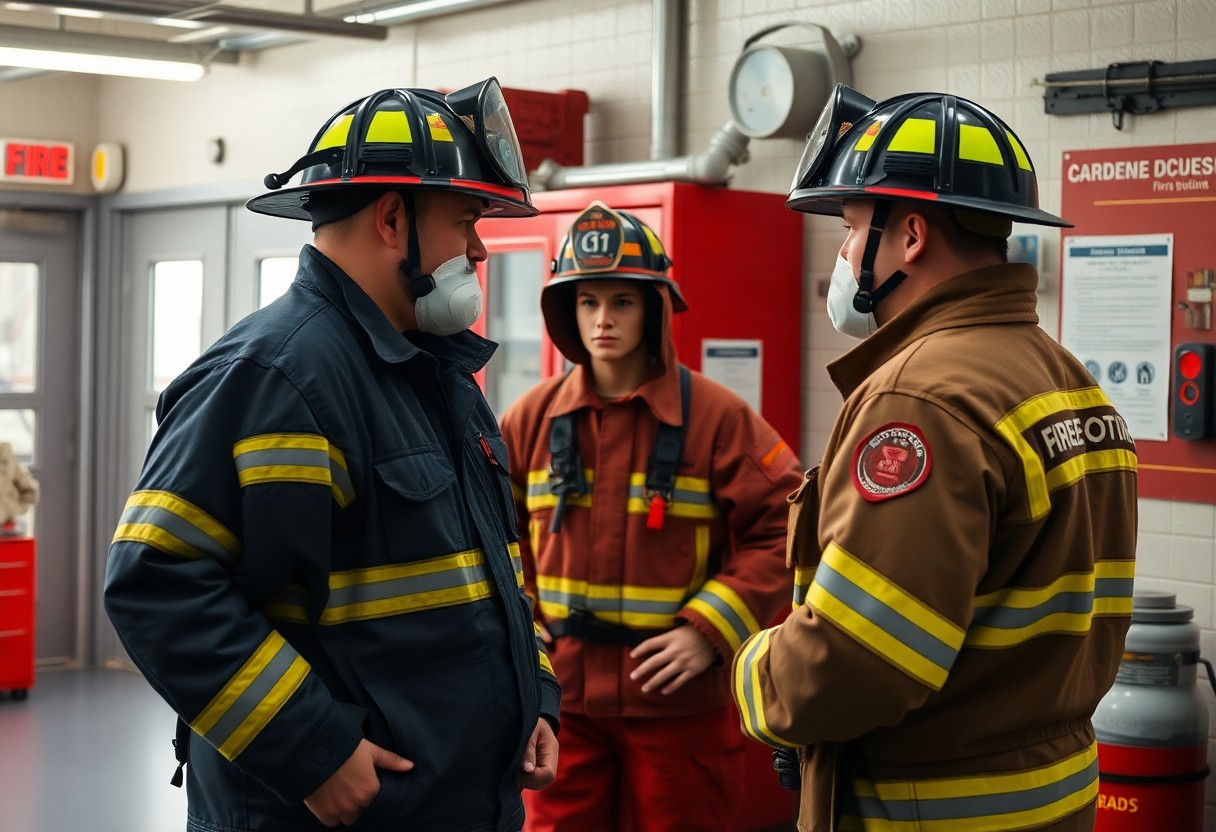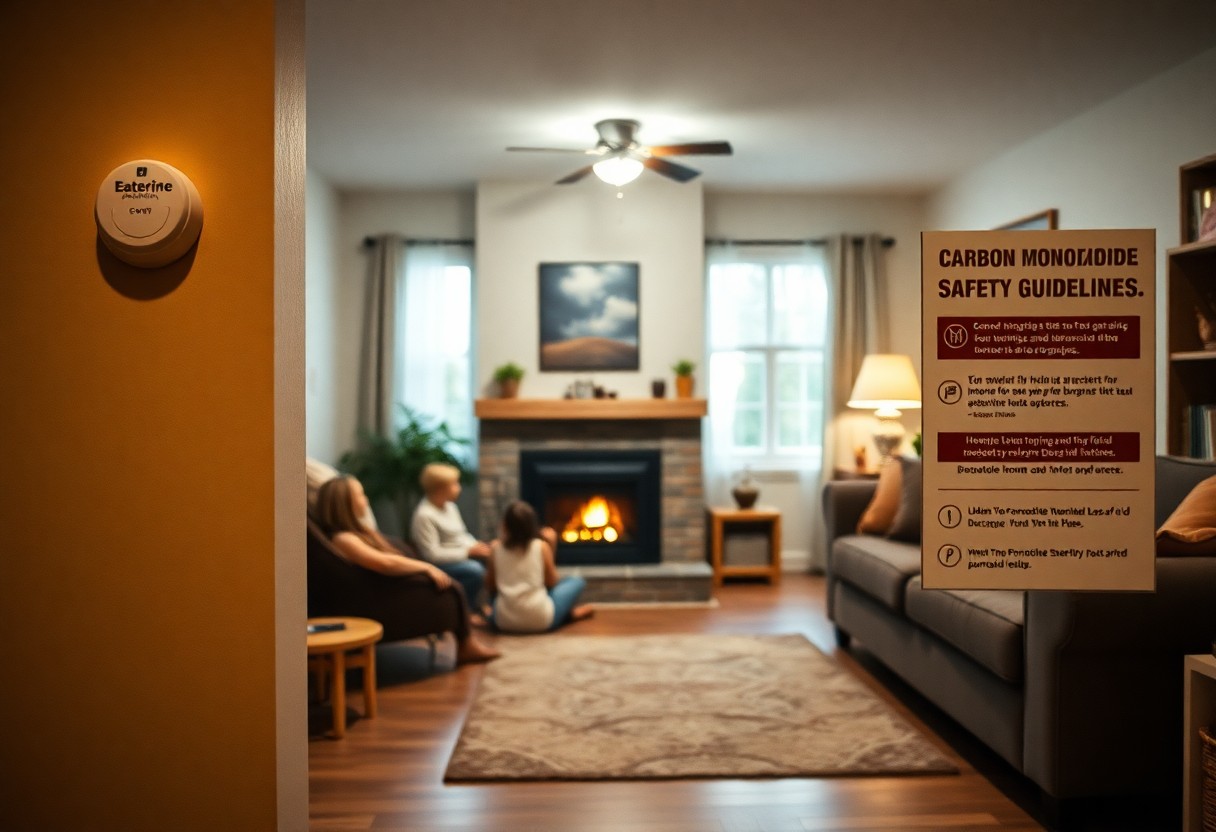Most people underestimate the dangers of carbon monoxide (CO), the odorless and colorless gas that poses a serious risk to your health and safety. Understanding the symptoms of CO poisoning, such as headaches and dizziness, is vital for your well-being. Regularly checking your appliances for leaks and installing working carbon monoxide detectors can significantly reduce your risk. Stay informed about this silent threat to protect yourself and your loved ones, ensuring a safer environment in your home.
Key Takeaways:
- Carbon monoxide (CO) is a colorless, odorless gas that can be lethal when inhaled in large quantities.
- Common sources of CO include faulty appliances, vehicle exhaust, and gas-powered generators.
- Installing CO detectors and ensuring proper ventilation can significantly reduce the risk of CO poisoning.
Understanding Carbon Monoxide
What is Carbon Monoxide?
Carbon monoxide (CO) is a colorless, odorless gas that can be deadly. It results from the incomplete combustion of carbon-containing fuels. You may encounter it in your home from various appliances or vehicles, making it crucial for you to recognize the inherent dangers.
Sources of Carbon Monoxide
Common sources of carbon monoxide include gas stoves, water heaters, furnaces, and car exhaust. These everyday items can emit dangerous levels of CO, especially in poorly ventilated areas, putting you at risk without your knowledge.
For example, a malfunctioning gas furnace can release dangerous levels of CO into your living space, while idling a car in an attached garage can rapidly increase CO concentration. Outdoor equipment like generators can also produce significant amounts of carbon monoxide when used in enclosed spaces. In fact, according to the CDC, more than 400 people die each year in the U.S. from unintentional CO poisoning, highlighting the importance of being aware of all potential sources in your surroundings. Regular maintenance of appliances and ensuring proper ventilation can significantly reduce risks, but vigilance is key.
Health Effects of Carbon Monoxide
Exposure to carbon monoxide (CO) can lead to serious health complications as it interferes with your blood’s ability to carry oxygen. Even at low levels, CO can cause fatigue, chest pain, impaired vision, and reduced brain function. Higher concentrations can result in severe effects, including loss of consciousness, brain damage, and even death. It’s crucial to recognize the risks associated with this odorless and tasteless gas to safeguard your health.
Symptoms of Carbon Monoxide Poisoning
Symptoms of carbon monoxide poisoning often resemble the flu and can include headache, dizziness, weakness, nausea, and confusion. You may also experience shortness of breath and chest pain, particularly if you have pre-existing heart conditions. Given the nonspecific nature of these symptoms, it’s vital to be vigilant, especially in poorly ventilated spaces with potential CO sources.
Long-term Effects on Health
Prolonged exposure to carbon monoxide can lead to lasting health issues, including cognitive deficits, memory problems, and heart-related complications. Chronic exposure might also exacerbate pre-existing health conditions, like asthma or cardiovascular diseases, significantly impacting your daily life.
Individuals who survive significant carbon monoxide poisoning may face long-term neurological effects, such as difficulty concentrating, mood changes, and impaired motor function. Studies show that approximately 20% of those affected experience ongoing symptoms, sometimes referred to as “post CO syndrome.” This can include persistent headaches and cognitive disturbances, making it crucial to seek immediate medical attention if you suspect exposure, even if symptoms seem mild initially.
Carbon Monoxide Detection
Proper detection of carbon monoxide (CO) is paramount for safety. You should place CO detectors in key areas such as sleeping quarters and near fuel-burning appliances to ensure that you’re alerted promptly. These devices can sense even low levels of CO and provide early warnings, enabling you to take immediate action before serious harm occurs.
Signs of CO Buildup
Be vigilant for signs of carbon monoxide buildup, which can manifest as unexplained fatigue, headaches, dizziness, or nausea. You may also notice symptoms worsening when you’re indoors. If anyone in your household experiences these issues, it’s vital to check for potential CO leaks and evacuate immediately to ensure safety.
Importance of CO Detectors
CO detectors play an vital role in safeguarding your home and loved ones. By detecting low levels of carbon monoxide early, they provide a critical alert that allows you to react swiftly to prevent serious health effects or fatalities.
Equipping your home with CO detectors could save lives, as they are designed to trigger alarms when CO levels reach dangerous thresholds. The CDC recommends placing these devices outside each sleeping area and on every level of your home. Regular maintenance and testing of your detectors are necessary to ensure they function properly; fresh batteries should be replaced at least once a year. By having functional CO detectors, you’re taking an important step to protect your family against this invisible threat.
Prevention Strategies
Implementing effective prevention strategies is imperative to safeguard against the dangers of carbon monoxide exposure. By understanding and applying safety measures, you can significantly reduce the risk of CO buildup in your home and ensure a healthier living environment.
Safe Use of Fuel-burning Appliances
Always operate fuel-burning appliances according to the manufacturer’s instructions to minimize CO risks. Ensure that appliances such as gas stoves, space heaters, and fireplaces are used in well-ventilated areas, and never use them to heat your home when you are not in close proximity.
Regular Maintenance Practices
Schedule regular professional inspections and servicing of fuel-burning appliances to ensure they function safely. This should include checking for leaks, blockages, and proper ventilation, which are all key factors in preventing carbon monoxide production.
Regular maintenance practices must include annual inspections of your heating systems, water heaters, and any gas appliances you have. During these inspections, a qualified technician should look for signs of wear and tear, gas leaks, and ensure vents are clear. Investing in CO detectors enhances safety; install them near sleeping areas, and check batteries monthly. Following these practices enables you to catch potential issues early, protecting you and your loved ones from the dangers of carbon monoxide.

Emergency Response
In the event of a carbon monoxide (CO) detection, swiftly evacuate the premises and seek fresh air immediately. Call emergency services and report the situation, ensuring you provide them with as much detail as possible about the detected levels. It’s vital to inform them about any individuals who may still be inside. Familiarize yourself with the hazards of Carbon Monoxide: The Invisible Killer to enhance your preparedness for such emergencies.
What to Do When CO is Detected
If carbon monoxide is detected, exit the building immediately and get to a safe location with fresh air. Avoid re-entering until emergency personnel have arrived and deemed it safe. Open windows and doors if possible to ventilate the area from a distance, ensuring your safety first.
First Aid for Carbon Monoxide Poisoning
Should someone exhibit symptoms of carbon monoxide poisoning, such as headache, dizziness, or confusion, you must act quickly. Initiate first aid by moving the person to fresh air while calling for emergency assistance. Monitor their breathing and heart rate, and be prepared to administer CPR if necessary.
In cases of carbon monoxide poisoning, prompt action is vital. After relocating the affected person to fresh air, check for responsiveness. If they are unconscious or breathing abnormally, initiate CPR and continue until paramedics arrive. Be aware that symptoms can worsen quickly; the sooner you react, the better the outcome may be. Always seek professional medical evaluation, even if symptoms appear to improve, as delayed effects may occur.
Regulations and Guidelines
Understanding regulations and guidelines governing carbon monoxide (CO) safety is imperative for protecting yourself and your household. These rules set minimum requirements for CO detection, equipment usage, and regular maintenance to mitigate the risks associated with CO exposure. Staying informed about these regulations ensures that you take appropriate actions to maintain a safe living or working environment.
National Safety Standards
National safety standards, such as those established by the National Fire Protection Association (NFPA) and the American National Standards Institute (ANSI), provide guidelines for installing and maintaining CO detectors. They recommend that you install a CO alarm within 15 feet of all sleeping areas and check alarms regularly to ensure they are functional. Compliance with these standards can significantly enhance your safety by ensuring early detection of CO hazards.
Local Legislation on CO Safety
Local legislation on carbon monoxide safety varies by state and municipality, often mandating CO detectors in residential and commercial properties. Many regions require the installation of battery-operated or hardwired CO alarms, especially in homes with fuel-burning appliances. You might find that local laws dictate the number of units needed, placement, and even testing protocols to enhance overall safety.
For example, some states have enacted laws mandating CO detectors in specific types of dwellings, such as multifamily units and rental properties. In California, legislation requires CO alarms in all single-family homes built after 2011, ensuring that your neighbors also comply with safety measures. Additionally, compliance with these local regulations often comes with specific penalties for non-compliance, underscoring the importance of being proactive in addressing CO safety within your home. Be vigilant and stay updated on local guidelines to protect yourself and your loved ones effectively.
Summing up
Taking this into account, understanding the dangers of carbon monoxide is necessary for your safety and that of your loved ones. This invisible gas can pose a serious threat without any warning signs, making it vital for you to ensure proper ventilation and maintain your appliances. Regularly check your smoke and CO detectors, and be aware of the symptoms of carbon monoxide poisoning. By taking these precautions, you can protect yourself and others from this hazardous substance.
FAQ
Q: What are the symptoms of carbon monoxide poisoning?
A: Common symptoms include headaches, dizziness, confusion, nausea, and fatigue. High levels can lead to unconsciousness or death.
Q: How can I prevent carbon monoxide poisoning in my home?
A: Install carbon monoxide detectors on every level of your home, ensure proper ventilation for gas appliances, and have regular maintenance checks performed on heating systems.
Q: What should I do if my carbon monoxide alarm goes off?
A: Immediately evacuate everyone from the premises, seek fresh air, and call emergency services. Do not return until it is deemed safe by professionals.
